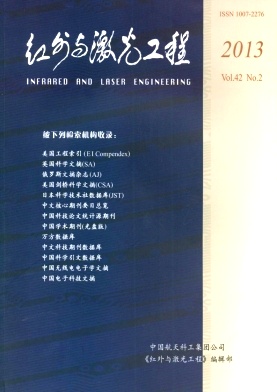|
[1]
|
Yang Zining, Wang Hongyan, Lu Qisheng, et al. Influence of spectrum characteristics on diode pumped alkali laser[J]. High Power Laser and Particle Beams, 2010, 22(10): 1-6. (in Chinese) |
|
[2]
|
|
|
[3]
|
|
|
[4]
|
Zhu Qiang, Yu Jianghua, Quan Hongyan, et al. Theoretical analysis of high-power dioder laser pumped alkali vapor laser[J]. Infrared and Laser Engineering, 2007, 36: 85-88. (in Chinese) |
|
[5]
|
Yang Zining, Wang Hongyan, Hua Weihong, et al. Diode-pumped rubidium vapor laser[J]. High Power Laser and Particle Beams, 2011, 23(9):2274-2275. (in Chinese) |
|
[6]
|
|
|
[7]
|
|
|
[8]
|
Krupke W F. Diode pumped alkali lasers[C]//SPIE, 2008, 7005: 700521. |
|
[9]
|
|
|
[10]
|
Wu Wuming, Leng Jinyong, Zhou Pu, et al.Research progress of high average power electric-energy laser[J]. Infrared and Laser Engineering, 2011, 40(2): 203-209. (in Chinese) |
|
[11]
|
|
|
[12]
|
Sheldon Shao Quan Wu, Hydrocarbon-free resonance transition 795 nm rubidium laser[D]. California: University of California, 2009: 93-98. |
|
[13]
|
|
|
[14]
|
Vadla C. Energy pooling in caesium vapour[J]. The European Physical Journal D, 1998, 1: 259-264. |
|
[15]
|
Neuman J A, Gallagher A, Cooper J. Pooling collisions in barium[J]. Physical Review A, 1994, 50(2): 1292-1300. |
|
[16]
|
|
|
[17]
|
Jabbour Z J, Namiotka R K, Huennekens J. Energy-pooling collisions in cesium: 6P+6P-6S+(nl=7P, 6D, 8S, 4F)[J]. Physical Review A, 1996, 54(2): 1372-1384. |
|
[18]
|
|
|
[19]
|
Beach R J, Krupke W F, Kanz V K, et al. End-pumped continuous-wave alkali vapor lasers[J]. Opt Soc Am B, 2004, 21(12): 2151-2163. |
|
[20]
|
|
|
[21]
|
|
|
[22]
|
Yang Zining, Wang Hongyan, Lu Qisheng, et al. Influence of fine structure mixing rate on laser diode pumped alkali laser[J]. Chinese Journal of Lasers, 2010, 37(10): 2502-2507.(in Chinese) |
|
[23]
|
Barbier L, ChCret M. Energy pooling process in rubidium vapour[J]. Phys B At Mol Phys, 1983, 16: 3213-3228. |
|
[24]
|
|
|
[25]
|
Constantine T E. Lifetimes of alkali-atom Rydberg states[J]. Physical Review, 1984, 30(6): 2881-2909. |
|
[26]
|
|
|
[27]
|
Cui Xiuhua, Mu Baoxia, Wang Shuying, et al. Energy pooling collisions in rubidium: 5P+5P-5S+5D[J]. Journal of Atomic and Molecular Physics, 2006, 23(4): 753-756. (in Chinese) |









 DownLoad:
DownLoad: